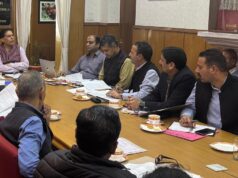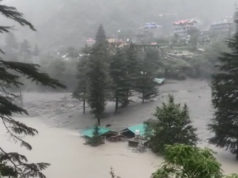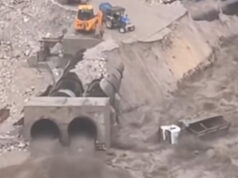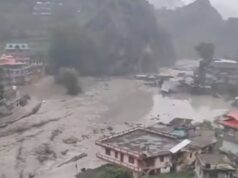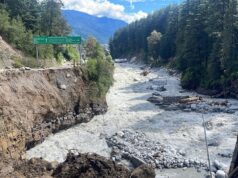Shimla – Himachal Pradesh is grappling with the aftermath of multiple severe cloudbursts and intense rainfall, which have resulted in significant loss and disruption across several districts. Chief Minister Sukhvinder Singh Sukhu convened an emergency meeting today to assess and respond to the unfolding crisis.
The state has been hit by five separate cloudbursts, affecting Kullu, Mandi, and Shimla districts. Reports indicate that two people have been confirmed dead, with over 50 individuals still missing. The relentless rainfall has wreaked havoc on infrastructure: five roads, including a crucial national highway, have been rendered impassable, and three bridges have collapsed.
The Shimla district, particularly the Samej area of Jhakri, has been severely affected. The residential zone has sustained substantial damage, with around 36 people unaccounted for and one road blocked. In Mandi district, the cloudburst near Tikkan Thalukot village has led to seven people being reported missing, two bodies recovered, and three homes damaged.
In Kullu district, the cloudburst struck Jaon village in Nirmand Tehsil, causing the disappearance of seven individuals and the destruction of nine houses, along with damage to two bridges. The disaster also caused a dangerous rise in the Pin Parvati river’s water levels, washing away a bus. Additionally, another cloudburst at Malana Sub Tehsil Jari has damaged the Malana bridge, leaving nine people stranded along the Beas river.
Chief Minister Sukhu has stressed that the primary focus is on rescuing individuals and providing aid to the affected families. To facilitate these efforts, the state government is deploying five transport drones to assist in rescue operations and providing satellite phones at the SDM level to improve communication. Additionally, 50 generators will be distributed to police stations and posts to ensure continuous power supply.
With the meteorological department forecasting continued heavy rains through Friday morning, the Chief Minister has urged residents to remain vigilant and avoid areas near rivers and rivulets. The State Disaster Response Force is being strengthened, and 13 emergency operation centers have been established across the state to monitor the situation and coordinate relief efforts.


